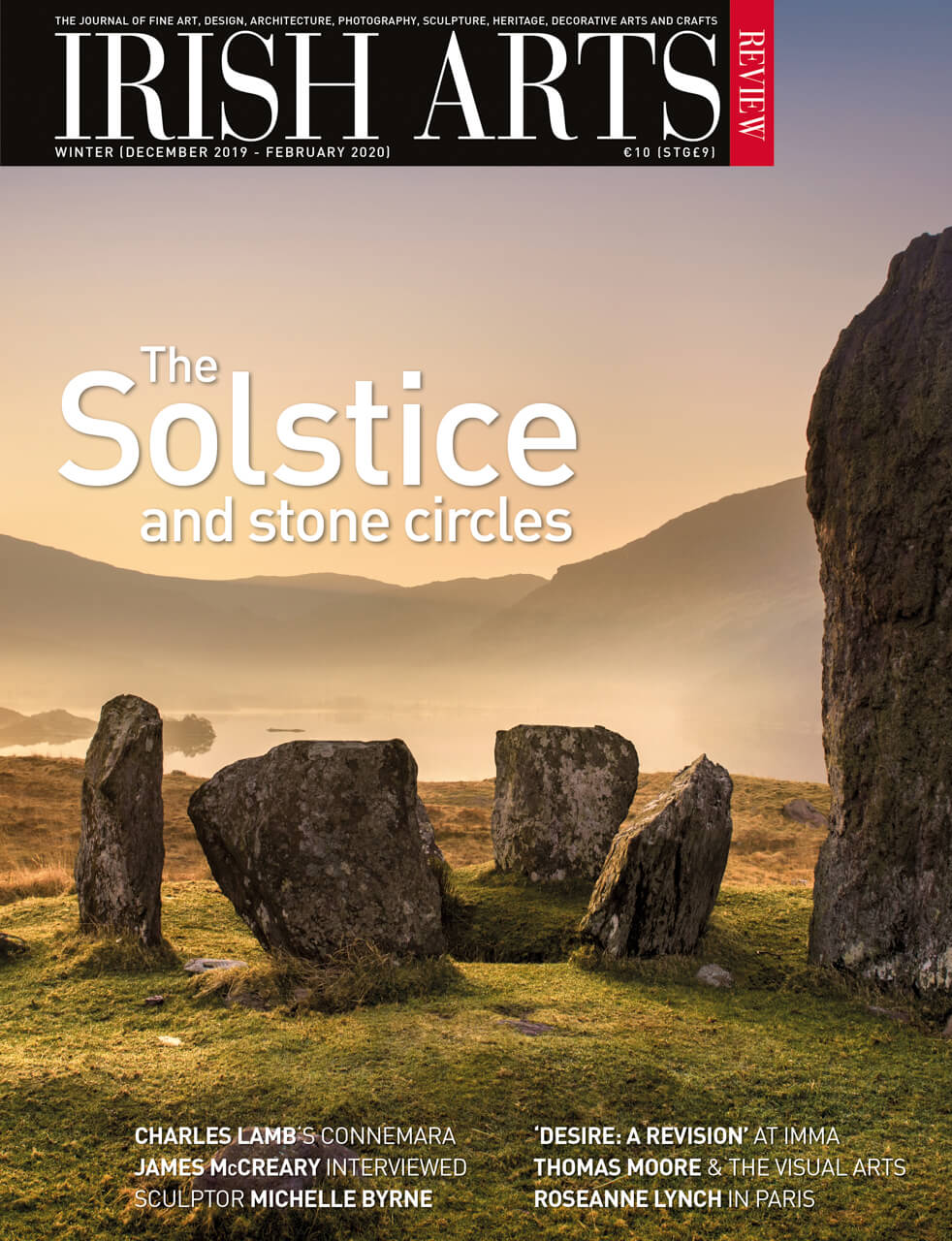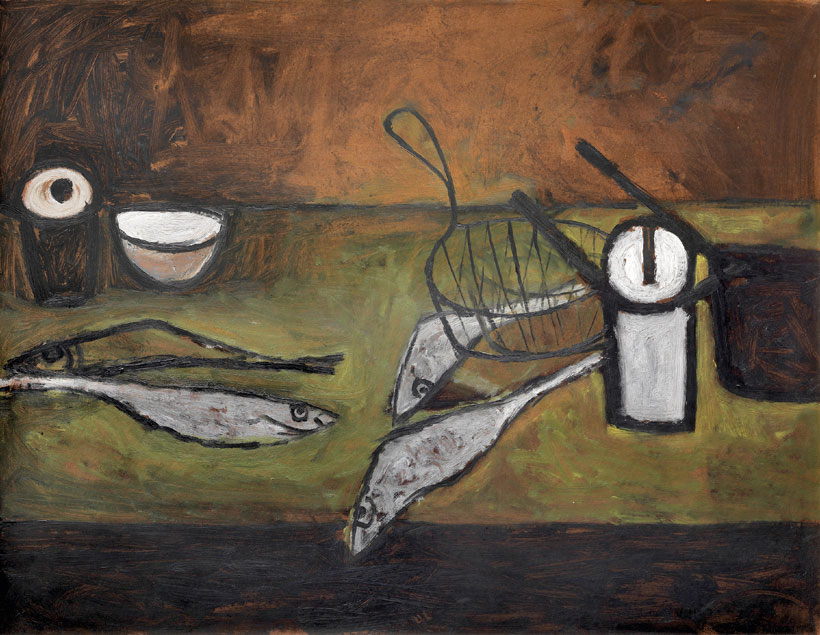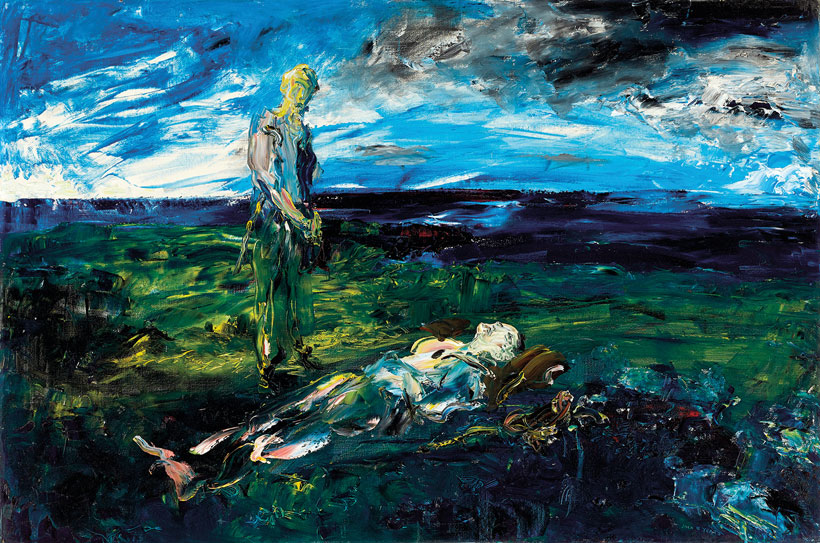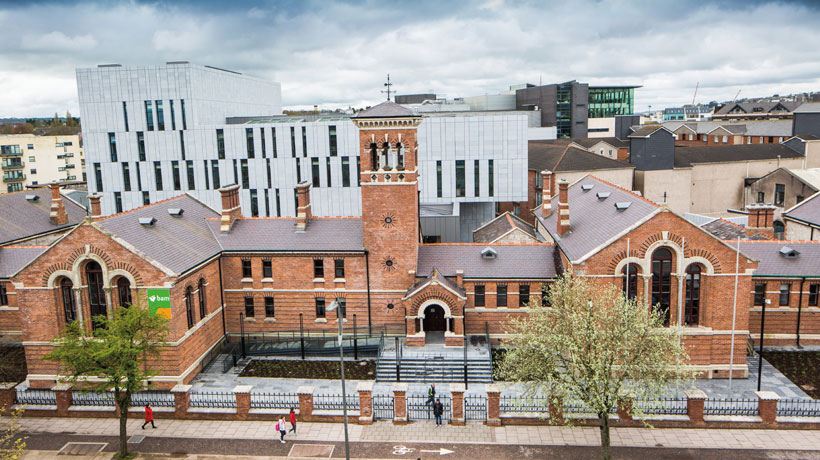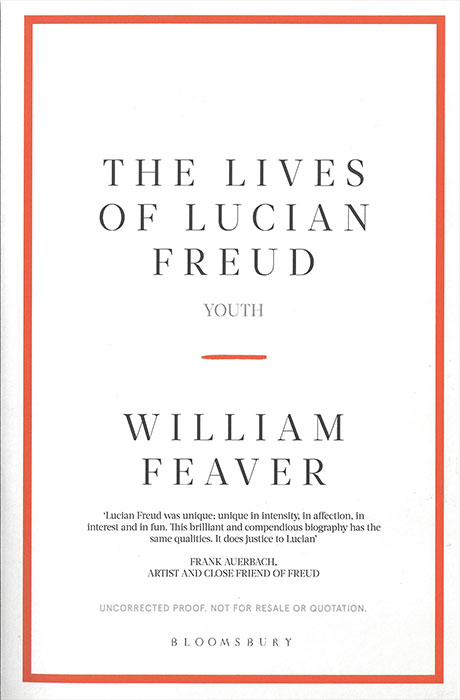
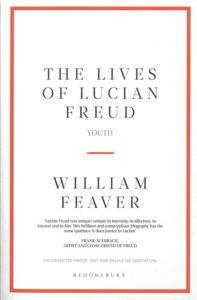 The Lives of Lucian Freud. Youth 1922-68
The Lives of Lucian Freud. Youth 1922-68
William Feaver
Bloomsbury Publishing, 2019
pp 680 fully illustrated h/b
£35 ISBN 978-1-40885-093-0
Philip McEvansoneya
As a veteran art critic long acquainted with Lucian Freud, William Feaver is very well qualified to write the biography of perhaps the most prominent and successful of recent British artists. The original plan for a brief account of Freud’s art was shelved and later superseded by what Freud called a ‘novel‚’ to be published posthumously. The resulting book, the first volume of two, is mostly presented in Freud’s own words. Feaver is able to do this having kept recordings and meticulous verbatim records of his conversations with the artist over many decades. Feaver has added extensively to this from interviews and documents, even down to the captain’s log of the merchant ship on which Freud served, briefly, in 1941.
Freud was born into a measure of privilege, which was reformulated (but not wholly diminished) when his family moved to London from Berlin following the election of Hitler. Once they were joined by his eminent grandfather, Freud was associated with a network of social, political and cultural prestige and power. For example, through an intermediary, the Princess Marie Bonaparte, who had helped Sigmund Freud to escape from Vienna in 1938, the Freuds were able to deploy the influence of the Duke of Kent, the brother of King George VI, to ensure that they became naturalised British citizens when that process had been suspended. While still a teenager, Freud enjoyed a very wide circle of acquaintances from across the arts. By the time he was twenty, he had been brought to prominence by a series of not-quite-respectable members of the cultural bourgeoisie, whose support soon brought him to the attention of influential figures, such as Kenneth Clark, who also became his patrons.
Feaver’s Boswellian role is played well and the book is very much a biography as opposed to an art-critical or art-historical analysis.
Feaver’s Boswellian role is played well and the book is very much a biography as opposed to an art-critical or art-historical analysis. Nevertheless, Feaver really comes into his own in his treatment of the work. To supplement the numerous illustrations, he includes some descriptions and evocations that are both incisive and succinct. Although there is no overarching treatment of it, the episodic development of Freud’s work is traced, from schoolboy experiments to his first exhibitions and ensuing professional rise. The range of Freud’s subject matter is detailed, from still life – notably the dead animal subjects – to landscapes, portraits and nudes. In parallel, Freud’s evolving grasp of his métier – the experiments with materials, the changes in techniques and style – is surveyed. Freud became the artist he said he already was through effort, and trial and error, as much as through the realisation of natural talent.
Be that as it may, Freud emerges vividly from this tale as wilful, capricious, self-centred and vain, irresponsible, self-indulgent and concupiscent. In Feaver’s non-judgmental analysis, Freud’s behaviour was the clumsy outcome of his essential shyness, but it did not differ greatly from that which he found in the circles of artists, criminals, dealers and gamblers in which he moved.
Readers of the Irish Arts Review will be especially interested to see what is said about Freud’s visits to Ireland and his other Irish connections, both personal and artistic, such as his enthusiasm for the work of Jack B Yeats. Freud bought an example of Yeats‚’ work, The Dancing Stevedores, c.1900, in the 1990s. This is loosely explored in the ongoing exhibition at IMMA, ‘Life Above Everything: Lucian Freud and Jack B Yeats‚’, where it is currently on loan. On several visits to Ireland, from 1948 onwards, Freud got to know the artists and writers of the Bohemia on the Liffey, for example painting with Patrick Swift in Hatch Street and drinking with Brendan Behan. The work of Freud and Swift in this period is quite close and they painted similar motifs. Among the works that resulted from visits further afield are Interior scene, 1948 – a pastel on black paper of his then companion, Anne Dunn, in their Galway hotel – and the tightly controlled drawing, Boat, Connemara, 1951.
Given the magnitude of material Feaver includes, it is disappointing that he omits Freud’s participation by invitation in the exhibitions of the RHA in 1951 and 1953. In the former year, he showed Daffodils (unidentified) and Portrait of a girl (unidentified), a work in pastel on black paper. The attention given on the latter occasion to Girl in a blanket, 1952, was considerable. For example, it was thought to be ‘cold and colourless … [but unusual because of its] very interesting flat spacing‚’ and it was even considered likely to be the picture of the year. By then Freud had become a point of reference; a portrait by ‘Edward Augustine‚’ (i.e. Edward McGuire) was said by one critic to show ‘a strong influence of Freud‚’.
The reader approaching this work who may be daunted by 700 pages covering only the first half of the artist’s life should not be put off. It is a lucid and absorbingly readable work, packed with artistic and human insight, amusing gossip and harsh recrimination; of one former acquaintance, Freud remarked: ‘He was killed in the war, I was pleased to see.‚’
Volume two is eagerly anticipated and, once it has appeared, it will be interesting to see whether a full biography of the artist will contribute in any way to debating the merits of Freud’s artistic achievement. Can it be argued that in his later work, after about 1980, growing respectability ran in parallel with Freud becoming somewhat repetitive and that he is now a little overrated?
Philip McEvansoneya is a lecturer in the History of Art in Trinity College Dublin.
